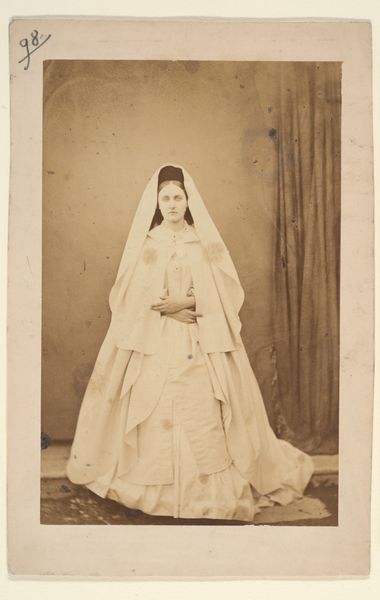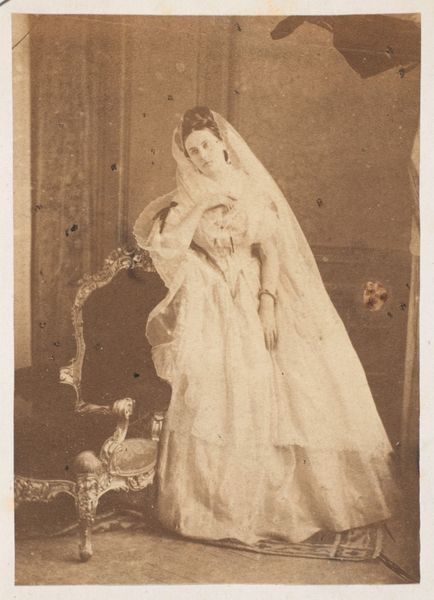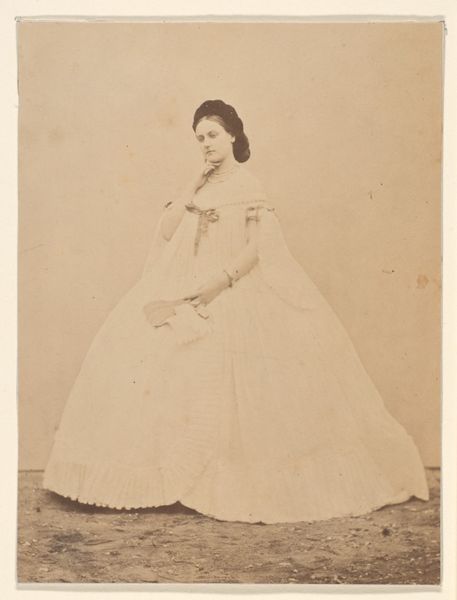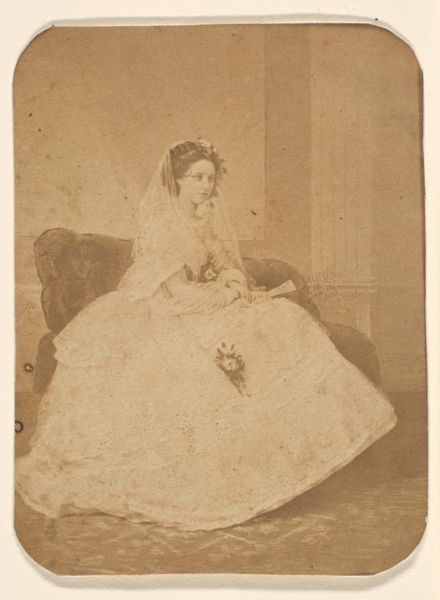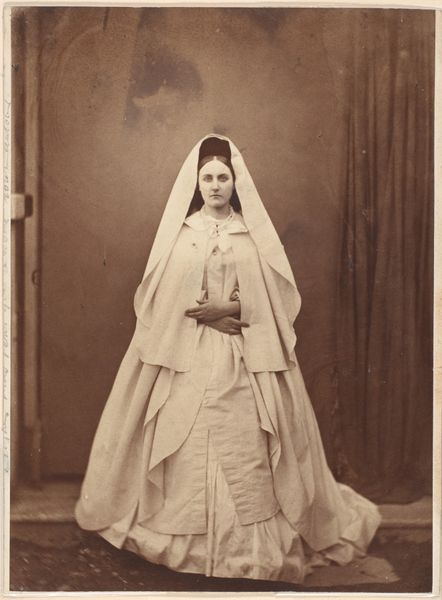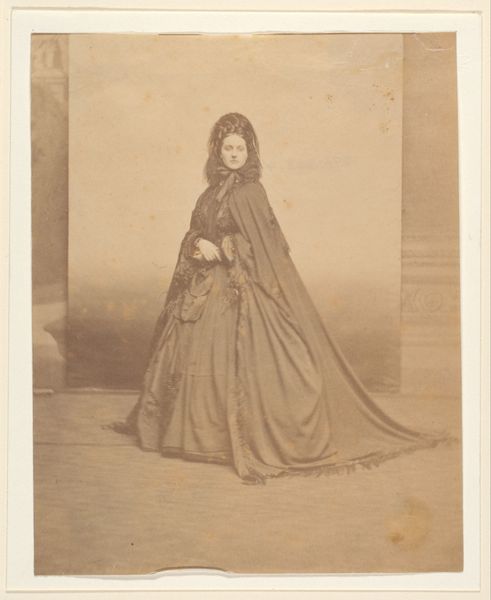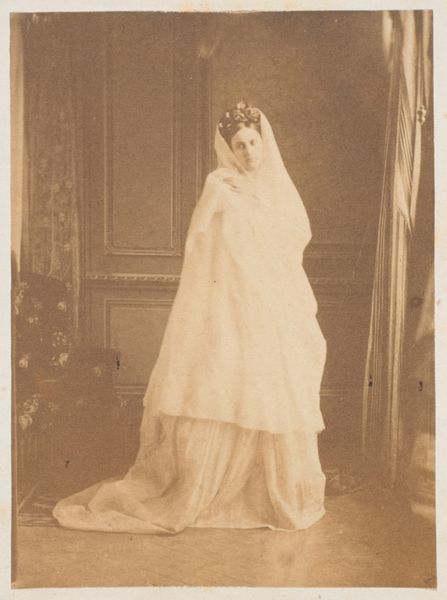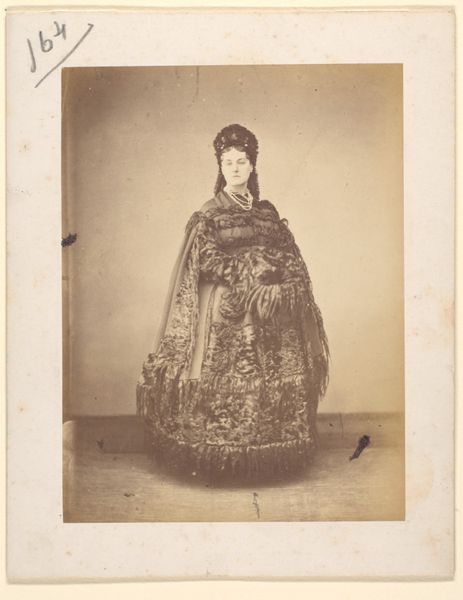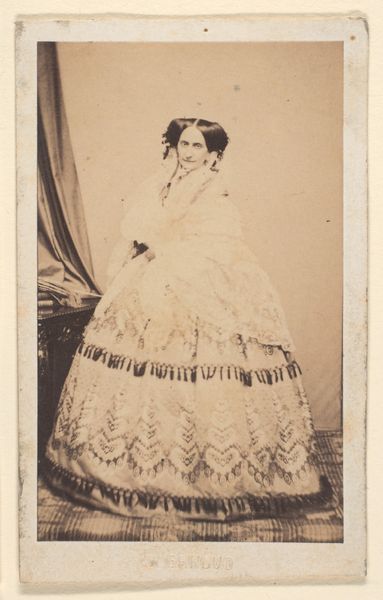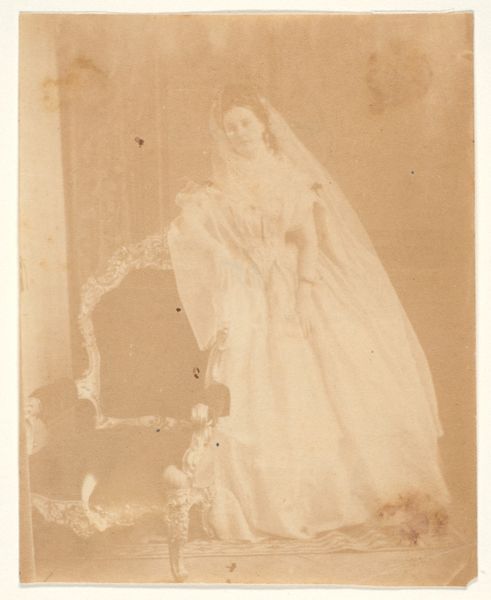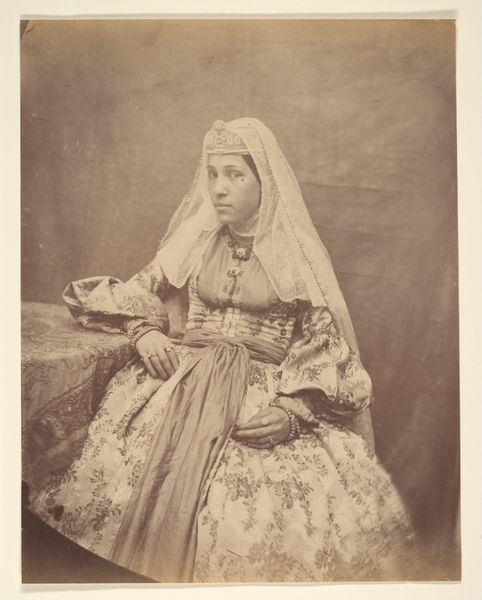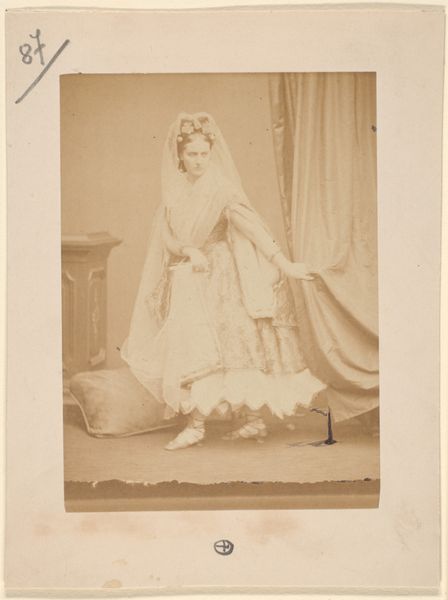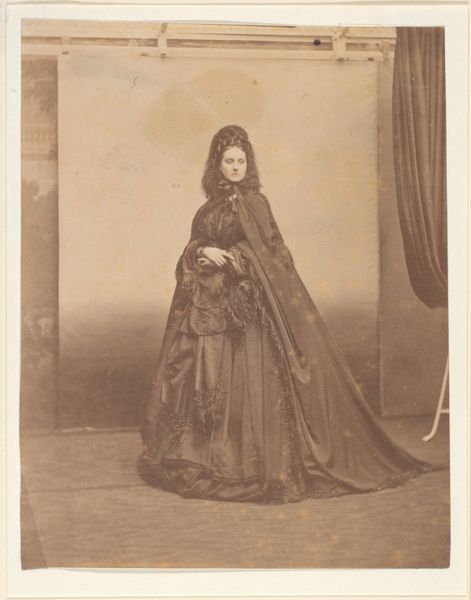![[Portrait in a White Dress] by Pierre-Louis Pierson](/_next/image?url=https%3A%2F%2Fd2w8kbdekdi1gv.cloudfront.net%2FeyJidWNrZXQiOiAiYXJ0ZXJhLWltYWdlcy1idWNrZXQiLCAia2V5IjogImFydHdvcmtzLzMwN2U3MGY5LWZiODMtNGRhMy04NGU3LTNmN2ZmY2M0MzA1Yy8zMDdlNzBmOS1mYjgzLTRkYTMtODRlNy0zZjdmZmNjNDMwNWNfZnVsbC5qcGciLCAiZWRpdHMiOiB7InJlc2l6ZSI6IHsid2lkdGgiOiAxOTIwLCAiaGVpZ2h0IjogMTkyMCwgImZpdCI6ICJpbnNpZGUifX19&w=3840&q=75)
Dimensions: Image: 32.5 x 27 cm (12 13/16 x 10 5/8 in.) Mount: 39.1 x 29.7 cm (15 3/8 x 11 11/16 in.) Mat: 61 x 50.8 cm (24 x 20 in.)
Copyright: Public Domain
Editor: So, this is "[Portrait in a White Dress]" by Pierre-Louis Pierson, made sometime between 1856 and 1866. It's an albumen print, with some photomontage techniques I think. It feels very poised, very deliberately staged. What jumps out at you when you look at it? Curator: Beyond the surface of a wealthy woman in elaborate dress, I see a visual representation of the constructed nature of femininity in the 19th century. Think about the layers—not just of fabric, but of expectation. The dress itself becomes a symbol, almost a gilded cage. Who dictates the wearing of such garments? And what freedoms are surrendered for such fashion? Editor: That’s a really interesting way to put it. I was so caught up in the details of the dress that I didn't think about the person *inside* the dress. It does look restrictive. Do you think Pierson was making a statement about these restrictions? Curator: That’s the fascinating ambiguity, isn’t it? As a photographer working for the French court, he was part of that system. Was he complicit, critical, or perhaps both? The addition of the hand-applied color, for instance, elevates it to art, while also reinforcing a kind of artifice. We have to consider that photographic portraiture, still quite new, became a tool of social mobility and identity. Editor: So the portrait is about so much more than just capturing an image. Curator: Precisely! It’s about power, status, performance. This isn't simply a picture of a woman, but an assertion of identity within very specific societal constraints. Editor: That’s given me a totally different way to read this picture. It feels much more complex now. Curator: Indeed. Hopefully, we can use it as a mirror to reflect on how image making can enable social standing or restrict freedom even today.
Comments
No comments
Be the first to comment and join the conversation on the ultimate creative platform.
